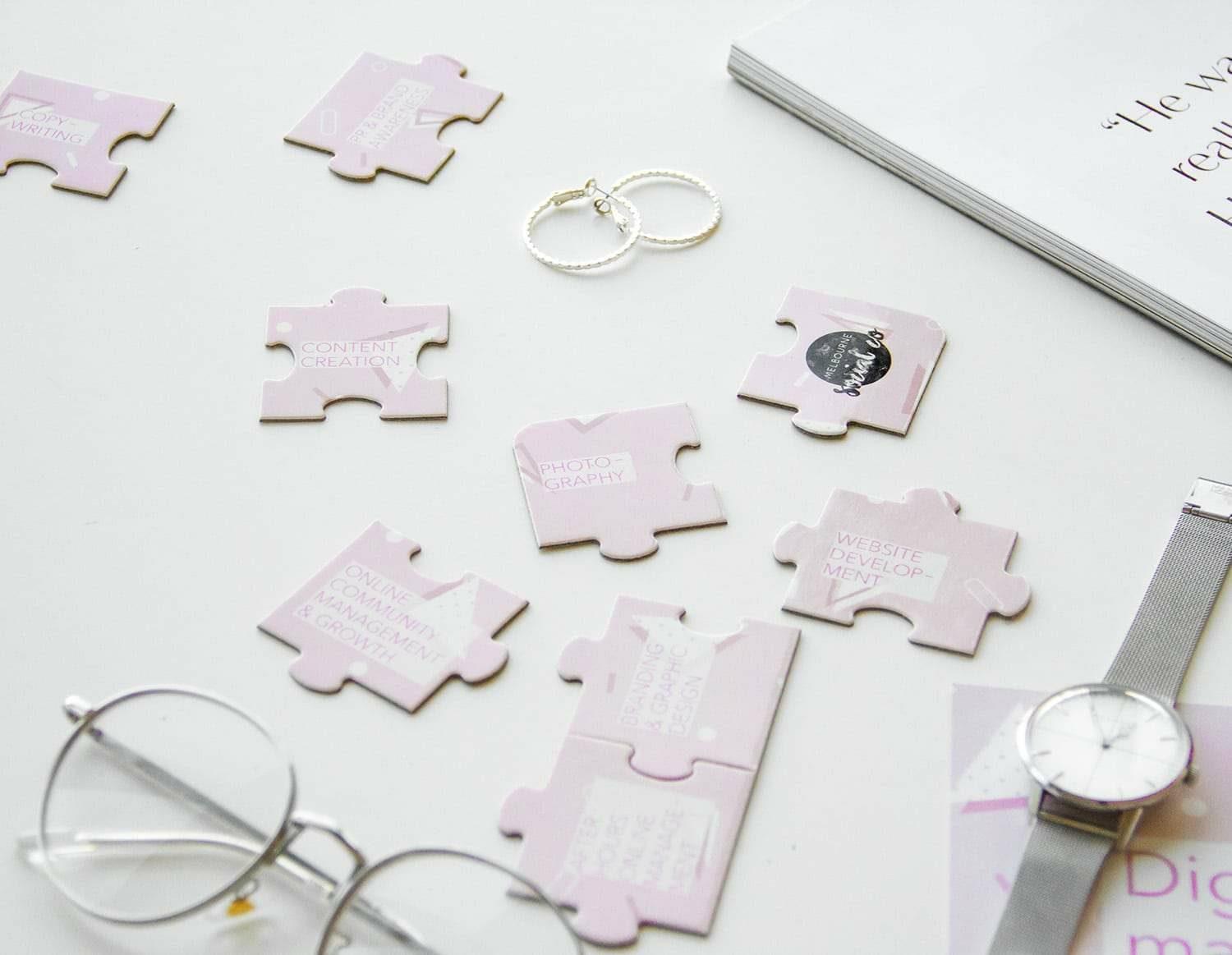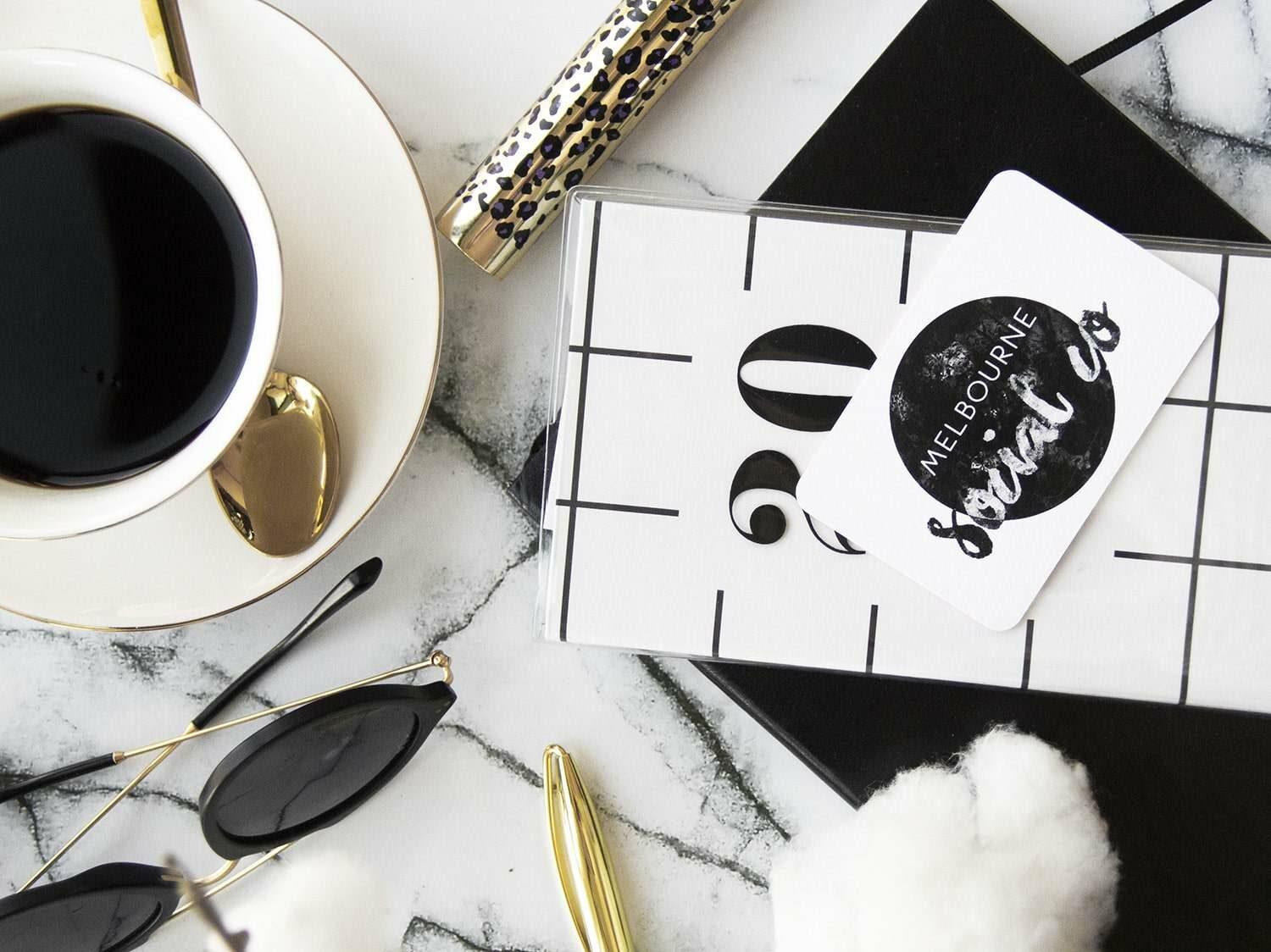The Importance of a Digital Strategy
Being a digital marketing agency, it’s no secret we place great importance on digital strategy and planning. This week we're chatting with our Senior Creative Strategist, Michaela Skilney, who gives some insight into her approach to digital strategy and its significance.
- What challenges do you face when developing a digital strategy?
One of the biggest challenges I face when developing digital strategies for clients is reconciling what’s a reasonable and realistic outcome for a campaign, and what the client expects to achieve. It’s essential to set goals and aspire to reach particular objectives, however social media isn’t an exact science.
More often than not, clients are under the false illusion that an agency can guarantee what content will go viral and how many followers they can attract. The truth is, if an agency can guarantee those types of outcomes, they’ll be employing the likes of automated bots, which are completely at odds with all platform’s T&Cs (and I would be running in the opposite direction!)
What a digital strategy can guarantee is that your social media presence is the greatest reflection of your brand, your offering and what appeals to your audience.
- Does your approach differ client to client?
Every client, regardless of how similar their product, service or audience is, will have a unique set of goals, a unique promotional calendar and to be successful, unique selling points. It’s therefore impossible to adopt a one-size-fits-all-approach from client to client. It may be less efficient on paper this way, to view client’s in isolation, but that’s the difference between what you get with a boutique agency like ours versus a strategy template you can download online!
- In your opinion, is having a digital strategy as significant as a traditional marketing plan?
Regardless of what medium you’re working in – traditional or digital marketing – a strategy is essential to give your efforts a sense of purpose. Without strategic thought and planning prior to the commencement of a campaign, you’re essentially setting yourself up to fail. Without the right preparation, you find you’ll always be in reactive mode and constantly behind the 8-ball!
- When developing a digital strategy, what research is involved?
There’s a ton of research involved when developing a digital strategy, predominantly around target audiences and their digital user habits. Most of the time, clients know their brands intimately and can share the history of their business off the top of their heads. What they mightn’t know, where I come in, is who their current digital audience is, and whether that marries with who they want it to be. The purpose – and outcome – of any digital content, whether that be a social media post, a blog or an EDM (electronic direct mail), is that it will reach someone and be consumed. Research at the digital strategy phase allows for your content to be targeted and seen by those you want to engage.
- Where’s the best place to start when constructing a digital strategy?
In order to create a digital strategy – a plan of attack for a brand that truly speaks to who they are and who they want to be – I need to fully immerse myself in what they do so that the end result feels as though it’s been crafted in-house. This usually begins by meeting with key business stakeholders for a complete brain dump on their part (their offering, their customer, their strengths, their weaknesses, their current digital output, their digital likes and dislikes, their projected sales etc.) as well as understanding what pre-planned promotions, product launches and events are in place for the next 3-6 months. These steps are the foundation on which I build my strategies, so you could say they’re non-negotiable!
- Do you believe every business should have some sort of a digital plan?
Embracing all things digital can be overwhelming for some brands and business owners, but it’s unavoidable. Consumer habits have changed from bricks and mortar stores to online shopping, and information gathering shifting from magazines and catalogues to social media and blogs. If you want your brand to thrive, let alone be relevant, you need to have a digital presence – and what kind of presence you have all depends on a solid digital strategy.
Want to chat to Michaela and our team about putting together a bespoke digital strategy for your brand? Contact us: [email protected] to find out more.

The ultimate guide to Instagram stories
Instagram continues to climb the ranks of popularity when it comes to social media platforms and it’s not hard to see why! Interestingly, more and more users are shifting their attention to Instagram stories, which means brands should be utilising the feature to help build brand awareness and increase engagement rates. We’ve put together a guide on all things Instagram stories to help you conquer this fun feature of Instagram!
Location, Mentions & Hashtags – Including hashtags, mentions or a location in your story is a great way to increase discoverability and get it seen by more people – even users that don’t follow you will be able to see it!
GIFs– These are huge right now. Everyone is having a lot of fun adding quirky GIFs to their stories whether it’s wine glasses clinking or a piece of pizza dancing. They’re something a bit different to your plain ol’ text and will make people smile so why not use them!
Polls– Who doesn’t love a good poll? Pasta or pizza? The Notebook or The Holiday? Polls are a fun way to encourage users to engage with your brand through stories. There’s a new poll feature too called the ‘emoji slider’. It allows users to decide how much they like or dislike something with the help of an animated emoji on a sliding scale.
Sharing posts to your story– An exciting new feature of Instagram Stories is that you can use it to cross-promote your content. From your profile, you can choose to share your latest post/s to your story. By doing so you can drive more engagement by encouraging your story viewers to view your post and ultimately get more eyes on your content.
Highlights – Back in the beginning, Instagram stories were ephemeral in nature as they only lasted for 24 hours. This is still the case, but Instagram created an option to extend their life and it’s called ‘highlights’. You can now save your stories and they will live permanently on your Instagram profile until you delete them. Your highlights section isa creative way to express your brand, show off products, drive traffic, or market your business!
It’s obvious that Instagram stories can benefit your business, and with Instagram introducing IGTV, we imagine a lot more people are going to migrate to Instagram and stay there. Instagram are trying to be a one stop shop for all things social, so now is the time to embrace all its affordances for your business!
If you think your business could benefit from a greater Instagram presence, and would like a little help doing so, shoot us an email – we’d love to chat with you about your digital strategy!

8 Reasons To Hire A Social Media Manager
Thinking about whether to manage your social media accounts in-house or to outsource to a professional?
We're sharing a few points on why it's a good idea to outsource your social media management requirements to a professional or agency.
1. Content creation
Having a professional manage your social accounts opens the door to amazing, expert content creation. Not only will your content be creative and of a professional standard, it will also be visually consistent and add to the overall aesthetic of your social pages.
2. Stay ahead of the trends
When you work with a professional, you're tapping into their years of broad experience in social media! It's your social media manager's job to stay up to date with all of the latest digital trends and they will adapt this knowledge to your business.
3. Consistent & professional tone of voice
It is very important when managing a social account, that the tone of voice of the account is consistent and professional. If a social account is managed internally and shared around amongst a team, the tone and professionalism of posts will differ. However, if the account management is outsourced, it will prevent variation in tone and keep the entire account consistent and professional.
4. Increase engagement
Managing your social media account is a daily task, but it can sometimes come second to the day-to-day tasks you have when running a business. Having a pro managing your social media means that no comment will go unanswered and social media can stay a priority without taking away time from the business. Not only will this make your business more personable and real, but it will increase your engagement rates, which will lead to your content appearing higher in your followers' feeds.
5. Reliability
Want to remove any unnecessary worry from your day? With a dedicated professional managing the account you can depend on them to post at the right times and provide a reliable account to engage with followers - this includes after hours!
6. It’s a time saver
Who doesn’t love saving time? By hiring a professional to head your social media it’s one less thing you, as a business, need to do. With your social accounts in more than capable hands, it gives you time to focus on other pressing matters.
7. Accountability
The great thing about using a professional to manage your socials is the level of accountability they bring. Clients expect a certain level of responsibility when outsourcing and a professional will record and measure the work their doing. This helps them meet the client’s needs and also holds them accountable for the work their doing.
8. It’s Fun
To put it simply, social media is fun, especially to those who have made it their career. By hiring a professional to manage your social media, you are guaranteed a committed worker who absolutely loves what they're doing.
Ready to outsource your social media requirements to a professional agency? We're here to help! Contact us at [email protected] today.

Common Social Media Marketing Terms Decoded
If you’re involved in digital marketing, chances are you’ve heard terms like ‘SEO’, ‘engagement' and ‘analytics’ thrown around, often with no explanations or convoluted descriptions. We’ve put together the complete guide of need-to-know social media marketing terms and what they mean for you and your brand. You’ll be bragging about your EDM strategies, your cost per click and conversion rates in no time with our quick guide of digital marketing definitions!
Common Social Media Marketing Terms
A/B testing
A/B split testing refers to testing multiple ads on your target market, where the social media platform (e.g. Facebook) records your best performing ads, and refines your creative as a result. To undergo split testing, you’ll need multiple creative executions of the same ad (variations in copy, different imagery, differing hashtags), and you can run as many of these variations as you like. The platform you’re advertising on records your audience responses such as reactions, comments, shares, or whether people hide or complain about the ad. Split testing is highly recommended, as it means the ads being shown to your target market are the ads which are most likely to succeed.
Analytics
Social media analytics refer to the statistics gathered from your ad sets, which tell you more about your target market and their social media habits. Your digital analytics will tell you who is engaging with your content, how they’re engaging with it (e.g. are they sharing the content? clicking through to your website? are certain times more popular than others?), and from this data you can make more informed decisions regarding your advertising. Analytics are one of the most valuable resources in forming your marketing strategy, and is a major part of the rise of social media advertising over traditional medias (such as billboards or magazine ads).
Clickbait
‘Clickbait’ headlines or tags are a marketing strategy which aims to drive an audience to a site or external link, through creating intentionally vague & dramatic, sometimes misleading headlines. Examples include: “You’ll never guess what Kim wore!” or “Oprah’s live interview: We’re SHOCKED by what she does next!”.
While clickbait headlines can be effective in encouraging people to click through to the next page, headlines like this can also drive consumer distrust or frustration.
Content creation
Content creation simply refers to the creation of images, text, videos, audio files, or any other content to be shared on social media. A lot of advertising or marketing agencies may offer content creation services, which is done by writers, photographers, videographers, editors, animators and stylists, and is posted strategically to engage an audience with a brand.
Conversion rate
The definition of your ‘conversion rate’ will vary depending on your marketing strategies. For example, if you’re running an ad set to encourage people to sign up for your newsletter, your ‘conversion rate’ will refer to how many people fill out the sign-up form. However if your ad set is designed to redirect people to your website, your ‘conversion rate’ will be a record of how many people have visited your site as a result of your ad. Your conversion rates will usually take into account how many people your ad was shown to, and is used to develop your ‘cost per click’.
Cost per click
Your ‘cost per click’ is a summary of how much your ad’s are costing you for every ‘converstion’. Ideally, you would like your cost per click as low as possible, because this means you are getting a higher ROI. Part of what A/B split testing takes into account is your ‘cost per click’, so the ads which are ultimately run are the most cost effective ads for your page.
EDM’s (Email Direct Marketing)
Email direct marketing is advertising in the form of direct emails to your client base. A common use of EDM’s is to promote an upcoming sale or special offer, inform customers of new products and releases, or simply to create a positive brand image by sending out relevant content. EDM’s usually record how many people click-through on your email, which contribute to your marketing analytics.
Engagement & Reach
‘Engagement’ and ‘Reach’ are two of the most common terms in digital marketing, and are both measures of the success of your ads. Engagement refers to how people respond to your ad, so ‘healthy’ engagement means having a high amount of reactions/comments/reposts for the amount of people who’ve seen your ad, and is usually calculated as a percentage. Reach on the other hand refers to the amount of people who’ve seen your ad. Effective advertising usually means striking the right balance between having lots of people see your ads, but also having those people respond positively to it. Social media marketers will focus on generating engagement or reach depending on your campaign; if you’re launching a new product you might focus on achieving a high ad reach, whereas if you’re encouraging people to attend a local event, your ads may focus on driving engagement.
Impressions
Your ‘impressions’ amongst your target audience are similar to your ad frequency. Impressions simply refers to how often your ads are shown to your target market, which is used to develop your engagement rates & cost per click.
Influencer
An ‘influencer’ is refers to a social media account with a significant amount of followers or likes, usually due to the quality or unique value of their content. Generally, an influencer has a minimum of 10k followers, while a ‘mega-influencer’ usually has at least 100k followers. Some brands use influencers as a highly targeted way of advertising to their particular audiences. Influencer marketing can yield a high ROI (return on investment) and has a good track record of fostering consumer trust. We’ve written another piece about digital influencers, which you can find here.
SEO (Search Engine Optimisation)
SEO (Search engine optimisation) is a popular digital marketing technique, and is usually completed by a digital marketer with specific experience or training in writing for SEO. By choosing specific words or phrases over others, and careful decisions about where these words appear on your site or page, your website may appear before others when consumers are searching for a particular product or service, via a search engine such as Google or Bing. Investing in SEO allows can increase the likelihood of consumers choosing your brand over competitors, however this service can sometimes be expensive, so make sure you review all your analytics if you take this path!
Want to pencil in some time to chat to our team about your marketing strategy in 2018? Contact us at [email protected] or visit our Consulting Sessions page to make a booking.

Instagram Aesthetics - The Importance of a Cohesive Theme
If you’re an Instagram addict like all of us at Melbourne Social Co., you may have noticed that many of the app’s most popular accounts have more in common with each other than just a high follower count.
Successful Instagram feeds are, above all, aesthetically pleasing, but in a cohesive way that accurately reflects the aesthetics, vision and message of the person or brand.
One of the main ways to achieve such a visually consistent and impactful feed is by implementing an Instagram ‘theme’. What this means is that there is a visual common thread between all of your posts, so that when someone views your feed it will look cohesive and organised. All your posts will in some way look like they go together.
But what's the right approach for your brand? We discuss a few different ways to implement an Instagram theme below.
Pick a colour
There’s an infinite number of themes to choose from for your feed, but you’ll want to pick one that suits your content and aesthetic. For example, you could have a colour coordinated theme, where a certain colour (or colours) appear in every post. These colours should reflect your aesthetic, and perhaps the design of your brand’s product or logo. The repeating colours will help make your feed look visually stimulating and organised, as well as creating an association between you/your brand and those specific colours.
A common subject
Alternatively, your theme may govern the content of the images you post. For example, your theme could be based around a specific object that appears in every post, such as coffee, plants, water or food; whatever you like! This type of theme tends to be best suited to Instagram accounts that function to promote a specific type of product.
Post & repeat
Another popular theme that guides the content you post creates a repeating pattern of two or three different types of images. For example, this could be set out with two photos of people or scenery for every text post. The text post is usually positioned in between the two photos so that when the feed is viewed as a whole the text posts create a line down the middle. This theme allows for some diversity of content, while also maintaining an organised and symmetrical look to your feed.
A theme for your Instagram page is important for more reasons than just creating a uniform feed and guiding the content you post. Remember that the follow button is located at the top of your main feed, so people are viewing your account and most recent posts as one entity that represents your brand as a whole when they are deciding whether or not to follow you. For that reason, you want to put your best foot forward with the type of cohesive, visually pleasing and professional feed that a theme can help you achieve.
Improve your engagement
One of the other key reasons an Instagram theme is so important is because it can help improve engagement and your connection with your audience. A consistent theme will help your posts stand out to your followers in their feeds littered with hundreds of other accounts’ posts. The element of repetition in your theme will also mean your audience will know what to expect from your posts, allowing them to easily understand the messages you are trying to communicate relating to your brand.
Because Instagram is one of the most powerful platforms available to you to promote yourself and your brand, it is important that your feed reflects who you are and effectively communicates the messages you are trying to get across to your audience. A theme allows you to achieve this in the most aesthetically pleasing way possible, while still appearing professional and creating interesting content for your audience. So, if you haven’t started planning a gorgeous new theme for your feed already – what are you waiting for?!
Do you need help developing a theme for your Instagram account, or creating gorgeous content to fill your feed? Get in touch with us here at Melbourne Social Co!
Contact us today: [email protected]
The real cost of buying likes and followers
If you’ve ever been frustrated or disappointed by a lack of followers or likes on your page, chances are you’ve considered purchasing followers on your Facebook or Instagram platforms. At first, this may seem like a simple solution: it’s a small cost and you now have a heap of followers! If users see your online popularity that’ll attract genuine customers, right?
This is the logic that platforms selling followers would promote. The reality is, purchasing likes and followers is not only wasted money, but is detrimental to your analytics, and can create distrust amongst your target audience.
One of the reasons social media is such a powerful platform for advertisers is not only the opportunity to reach consumers, but the analytics it provides. If you run your own Facebook or Instagram business page, the reports you can access on who’s engaging with your page are vital for planning any campaign.
In the age of widespread digital advertising, the way to engage with potential customers is tailoring ads to their interests and social media habits. If your reports and analytics are cluttered with disingenuous likes and follows, not only will you be missing out on the analytics of your potential customers, but your advertising dollars will be wasted on wide reach ads (which thanks to the algorithm changes, are less likely for anyone to see).
Another major disadvantage of buying followers is that it can damage consumer trust. If you’re advertising via social media, chances are your target audience includes some tech savvy, regular users, who know what organic brand engagement looks like. If your page has a heap of followers which doesn’t equate to likes and comments, consumers will suspect your followers aren’t genuine, and may deter the users that could have turned into customers.
Ultimately, the main reason your brand is advertising is to attract genuine customers. Having likes and followers is a great measure of how your audience is responding to your content, but the only value behind these likes is to tailor engaging content, which will attract users to your brand. The money spent on buying followers could be spent better on literally anything else: buying props for your flatlays, boosting a Facebook post, even an extra coffee will be better for your brand than followers that have to be bought.
If you’d like to know more about creating great content and reaching your audience, contact us at [email protected]

Why Facebook algorithm changes aren’t as scary as we think
On January 11th, Mark Zuckerberg announced a series of changes to the Facebook algorithm, designed to reduce excessive news and business related content and promote interaction between family and friends, dubbed ‘meaningful interactions.’ By returning to their social roots, the shift has alarm bells ringing for many businesses and organisations – shares in the site immediately fell four percent, effectively wiping over $3 billion from Zuckerberg’s net worth.
For news sites, this Facebook algorithm shift will also involve the prioritisation of news sources deemed ‘trustworthy’, while celebrities and influencers can also expect to see less of their posts in followers’ feeds. In terms of hard data, Zuckerberg committed to reducing news content in users’ feeds from five to four percent. The changes have been deeply concerning for organisations – entire social media strategies have been plunged into jeopardy and many businesses are searching for viable solutions.
However, Facebook algorithm changes and calls for more user tailored feeds are nothing new. In fact, Facebook made a strikingly similar commitment back in August of 2014. Back then, the site pledged to show less promotional and recycled content, causing similar uproar among content creators, businesses and influencers. However, as these previous changes have demonstrated, organisations providing quality content and genuine engagement with users have emerged unscathed from algorithm shifts.
Crucially, data shows actual page engagement declined over 20% in 2017, highlighting overall user fatigue caused by clickbait pages and duplicated, poor quality content. The removal of low quality pages from users’ feeds is therefore a positive for the site overall. By creating an environment that favours meaningful content tailored to a user’s tastes, Facebook is effectively creating a more trustworthy and reliable site for both individuals and businesses.
While the changes won’t perhaps be as catastrophic to existing marketing strategies as first thought, algorithm changes are a timely reminder as to the importance of a dynamic and meaningful content plan.

So - what can you do to make sure your business content is seen and heard in 2018?
-
Quality Content
It underpins any successful marketing strategy. Users don’t want to feel spammed or overwhelmed by the pages they follow. Be mindful in the regularity of your postings and enforce a standard tone and length to your content. Remember, poorly written and untailored content is the main target of the Facebooks algorithm changes.
-
Prioritise building a genuine and targeted following
By creating content which users consistently click on, you can take advantage of the new algorithm which notes who is clicking on your content, and what they're clicking on, and knowingly promotes those pages.
-
Embedding Posts
Pinning key posts to your business’ page is a practical method of making sure your content isn’t lost in the fray amidst newsfeed changes. Make sure that as soon as a user clicks on your page, they are presented with the most relevant content as opposed to merely your most recent posts.
-
Facebook advertising
As actual page engagement declines, the importance of exploring a paid Facebook advertising campaign is continually increasing. Banners, page promotion, email opt ins and targeted viewers – advertising with Facebook is a multifaceted means of reaching your desired audience. Crucially, the algorithm for Facebook advertising is currently not being changed in tandem with these new shifts.
-
Broaden advertising to Facebook’s additional features
Increasingly, younger users are engaging less with the traditional Facebook interface in favour of the dedicated messenger app. Take advantage of changing user habits and target your advertising to within the messenger app. Similarly, Facebook live is an emerging method which promotes active user engagement, with endless opportunities for business promotion.
-
Like and share… and unfollow!
Promotions and competitions imploring users to like, share and tag your posts are set to be another casualty of the Facebook algorithm changes. Data suggests such competitions are a poor means of building an engaged audience, and worse, alienate your existing audience. In fact, many such competitions actually break Facebook’s community guidelines, running the risk of post or even entire page deletion. Choose your promotions and competitions wisely.
-
Influencers
According to Forbes, influencers are not currently bound by the same restrictions placed on businesses amid these new algorithm changes. For the time being at least, collaborating with influencers is more important than ever, especially if your business is currently not engaging in a paid promotion with Facebook. The key to a successful influencer collaboration is choosing an influencer that has a genuine link to your product or service or desired audience.
Want to chat to our team about your Facebook strategy for 2018? Get in touch today!







